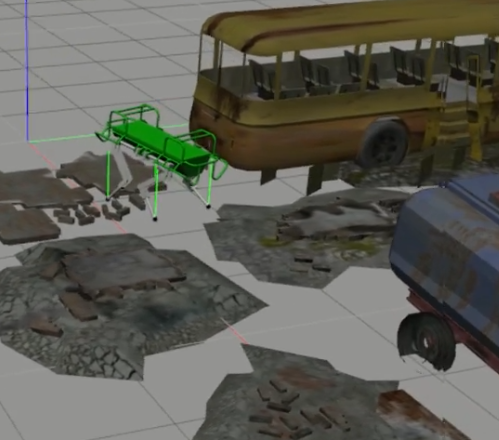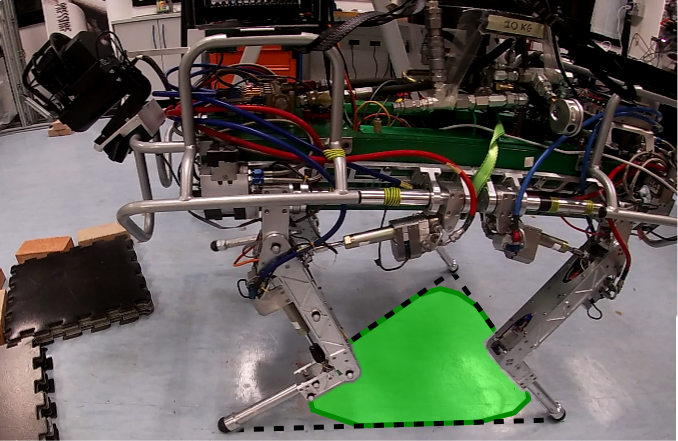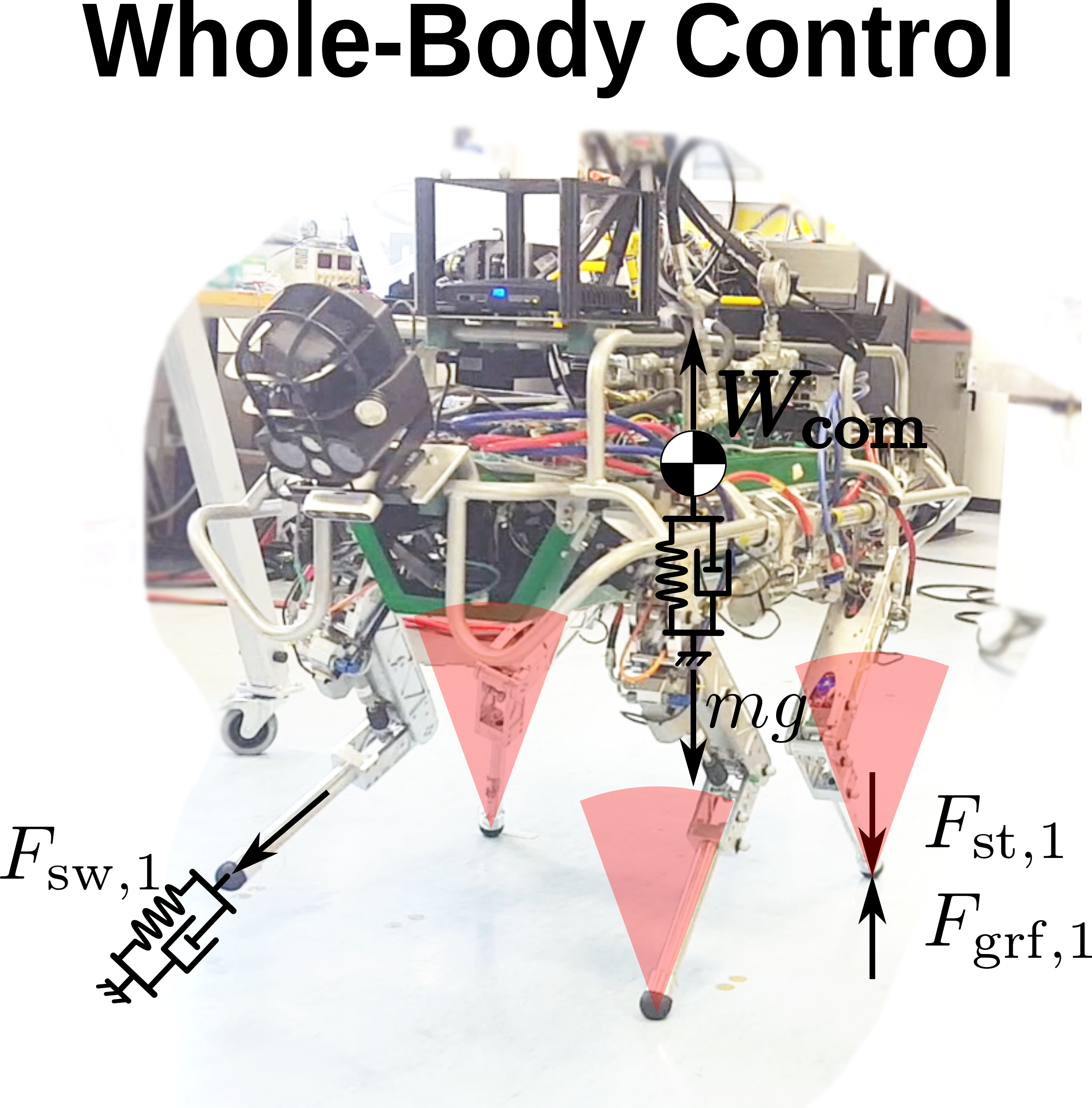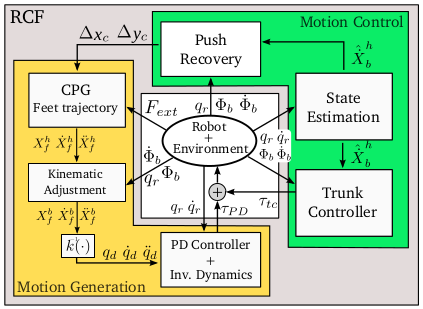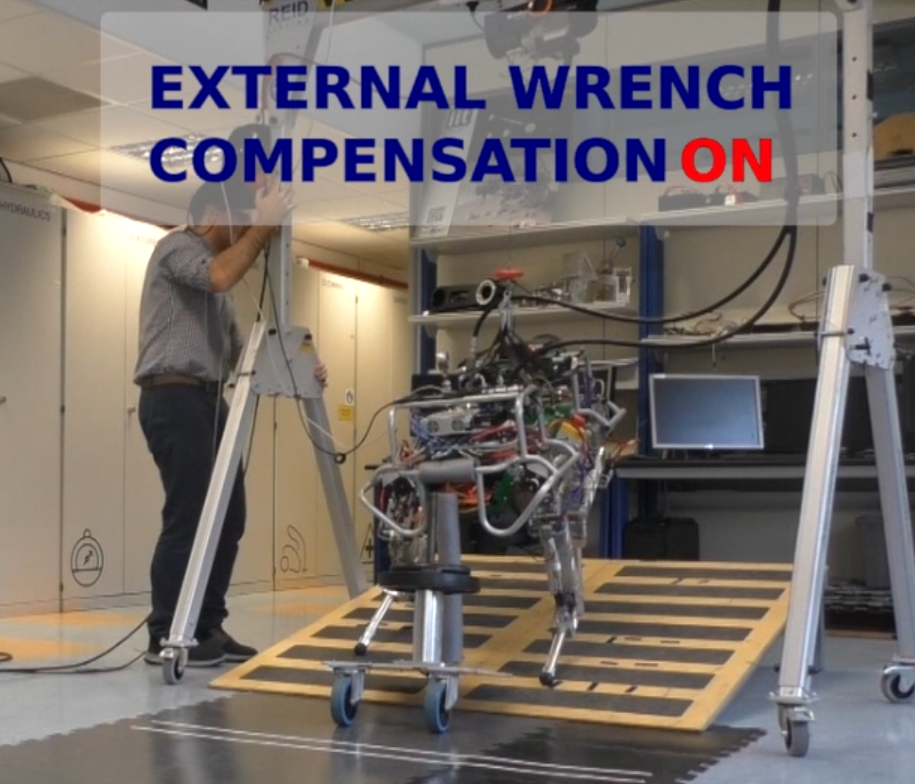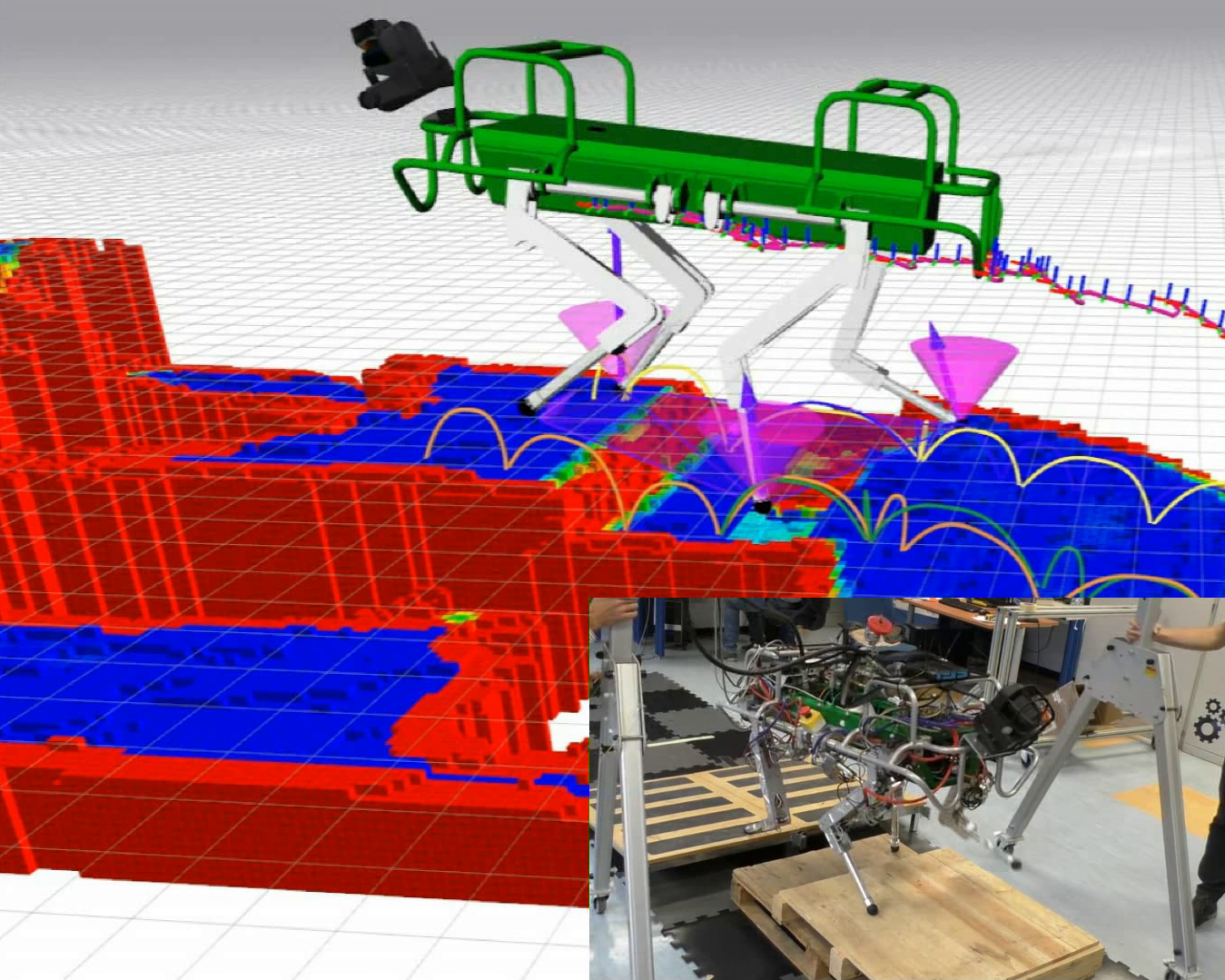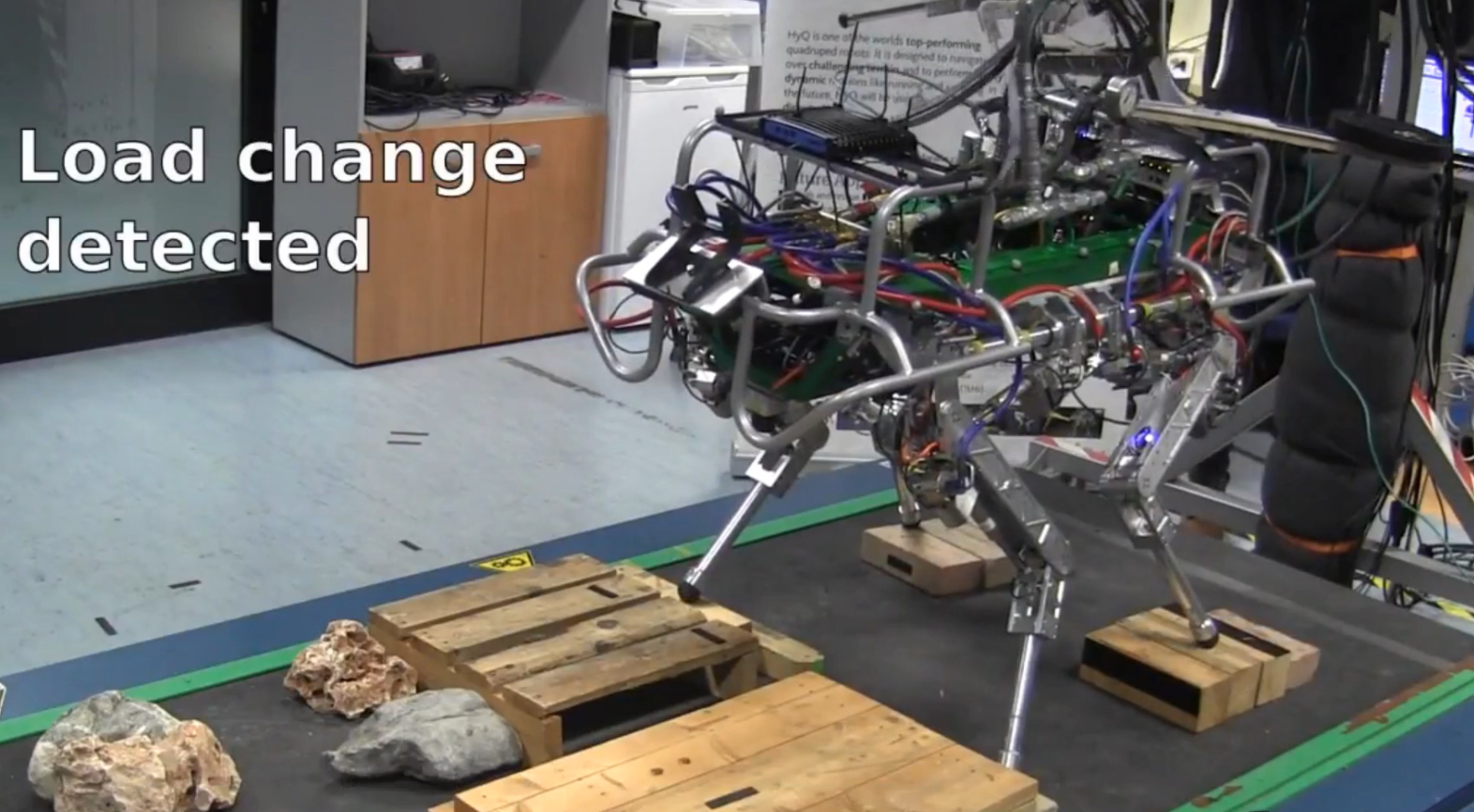The main ingredients for legged locomotion are planning, control, perception and state estimation. in our locomotion framework, we envisioned different layers, according to the quality of the perception feedback available. At the bottom layer we have blind reactive strategies, with basic terrain adaptation mechanisms and reflex strategies.
Motion primitives are triggered to override the planner in situations where the robot could be damaged (e.g. stumbling). We also implemented several gaits (crawl, trot and bounding) that allow our quadruped robots traverse challenging terrains. However, when the complexity of the terrain to be negotiated increases, or when the execution of the requested task involves highly dynamic motions, optimization-based planning strategies are preferable. Therefore, another branch of studies is aiming to reduce the complexity of the optimization, trading off accuracy with computational efficiency, in order to be able to carry out (online) optimization of trajectories during locomotion.
